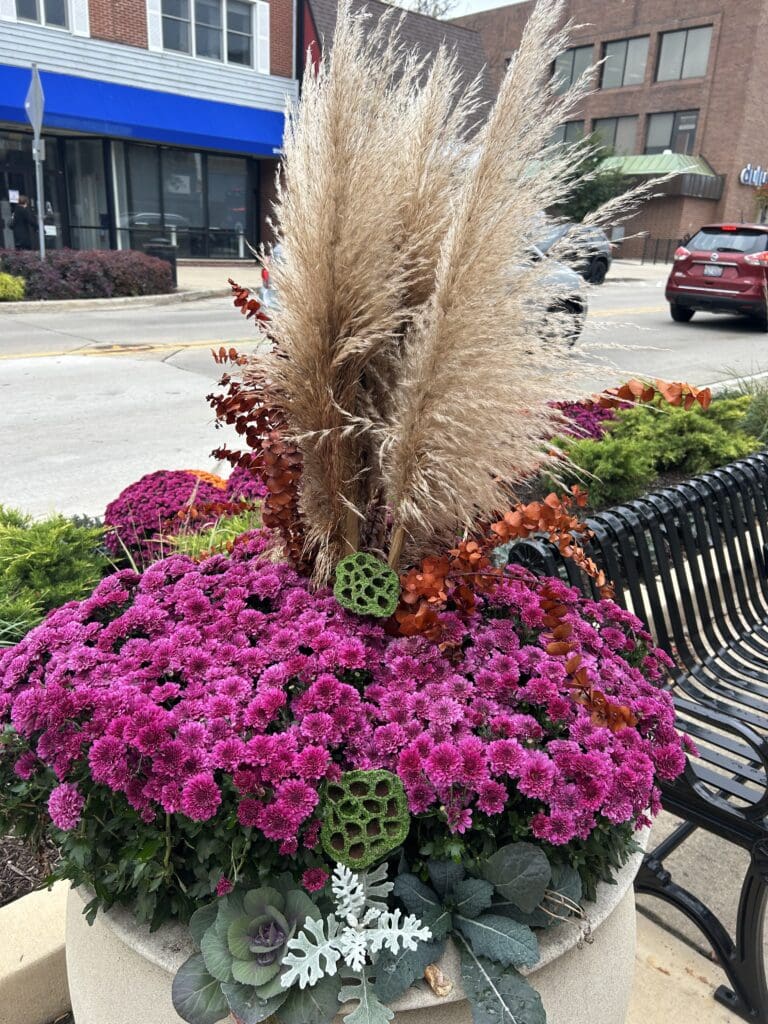
If you provide commercial landscape maintenance, one area of untapped potential is a seasonal color program. Even if you currently have a seasonal color program, you can take this offering to the next level.
Melissa Dorsey, vice president of sales for Woodlawns Landscape Company, Inc., based in Mundelein, Illinois, says a lot of landscape companies don’t put a lot of stock in the service, but if you dedicate someone to grow it and understand it, your business will grow as well.
Sandra Koslowski, account manager for Beary Landscaping, based in Lockport, Illinois, adds that seasonal color services can be an opportunity to provide additional value to clients.
“When somebody’s making a big investment of flowers, you really want it to show because everybody can mow grass but really having a great flower program is going to make a difference,” Koslowski says.
Plan Ahead
Brittney Oden, enhancement operations manager for Southern Botanical, based in Dallas, Texas, says planning ahead is the main way to step up your seasonal color services. Unless it’s a new client, Oden already knows what her customers want six months before that season starts.

She says planning ahead helps them with price negotiations as they contract-grow a lot of their plant material.
“To give them the best seasonal color, we need to be able to plan and it also helps our crews so you can plan ahead and know, because you have a limited window to get your seasonal color in so it helps us to plan how long it’ll take us,” Oden says.
Koslowski says they also order their plants in advance and you need to explain this to clients so they understand why you’re planning so far ahead.
Dorsey agrees that planning ahead is paramount. She says they treat their seasonal color jobs like any other design project. They sell four to five seasons of color six to 12 months in advance, as they preorder their material in bulk. Dorsey explains that they have great margins thanks to their planning and not recklessly buying plant material.
“You have to educate your account management and client representatives, your staff to discuss with their residential and commercial clients the process of buying it all at once, booking for the year,” Dorsey says. “We’re like fashion, we’re 10 to 12 months ahead.”
Critical Steps to Maintaining Seasonal Color
Because seasonal color can be a significant investment for your clients, it’s critical to keep these planters and beds looking great for as long as possible.

Koslowski says watering is the most crucial step to keeping plants looking good. Beary Landscaping has watering crews who spend eight hours a day, 40 hours a week watering their customers’ plants.
“These are small, little root balls, like the size of an orange,” Koslowski says. “They dry out really fast and keeping them wet, especially in that first month, is super critical. When it’s super hot, or when it’s super cool, we adjust the watering accordingly to try and let them thrive.”
Oden says they add their own soil to the beds when they prep it so they know what the soil profile looks like. They also make any necessary corrections to irrigation settings.
“Some color doesn’t like wet feet, so making sure that irrigation is set right so that way we don’t have problems on the front side of getting it established,” Oden says.
Oden says they utilize color fertilization and color drenches to encourage more blooms from their plants toward the end of a season or during extreme temperature swings.
Aside from watering, seasonal color maintenance teams spend the majority of their time deadheading and mitigating weeds. Koslowski says during the first four to six weeks, weeds are more of an issue as the bed has a lot of extra space with fertile soil prime for weeds to thrive. Oden says they have to deal with a lot of nutsedge in their seasonal color beds.
“It’s using chemicals to spray those out because you can’t pull them or you’ll multiply them, and just making sure that the color is deadheaded so it’ll start pushing more colors throughout the whole season,” Oden says. “Those are the two biggest things that we take care of.”
Dorsey says they don’t purposely pick plants that benefit from deadheading; they’re just looking for plant material that will give their clients the best show.
Challenges of Seasonal Color

Your location will dictate what type of challenges you will most likely encounter when it comes to your seasonal color program. Oden says it is the extreme temperature swings they face in Texas that are hardest to deal with. They can have temperatures climb to triple digits in the summer and freezing weather in the winter.
They will adjust the irrigation systems as necessary during the summer and cover plants in the winter, especially those in planters.
Koslowski says the weather in Chicago is their biggest challenge as well. High temperatures and drought conditions can cause freshly planted flowers to struggle. Other times, when it’s rainy and cool, it can make it hard for the flowers to take off.
“When I pick a flower, some years it does great,” Koslowski says. “Some years, that same exact flower in that same exact bed in that same exact place will struggle because in the beginning of the season or the middle of the season, the weather just went haywire.”
Dorsey says pests and diseases are one of their biggest challenges. She says Japanese beetles love to eat sweet potato vines and canna, while in the fall, other pests like to eat cabbages and kale in plant beds. She says if clients have issues with rabbits, you need to rethink the space and try raised beds instead.

“Rabbits love fresh new stuff,” Dorsey says. “They tend to leave stuff alone a little bit later so if you can get it up and going, usually they’ll leave you alone. In general, I try to plant for the bunnies.”
Dorsey says they also keep an eye on the plant material for plant diseases, especially if it’s irrigated through overhead watering.
If your client has a limited budget but still wants seasonal color on their property, focus on their showcase entrance where people are the most likely to see the plants, whether it be a property entrance or the front doors of an office building. For instance with HOAs, Oden says they will focus on their monument sign. Koslowski says that even putting two pots out front of an entrance can be impactful.



